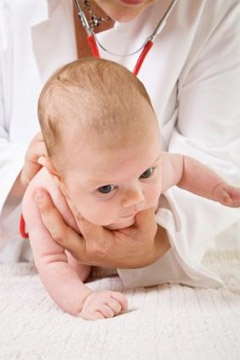In Vitro Fertilization (IVF), is a method developed to help handle infertility issues except cases of infertility causes by severe uterine problems, such as intrauterine adhesions. But how far it has successfully served the purpose is still an area of debate.

These days, over 4 million children are born following IVF treatments worldwide and it is generally regarded as a safe technique, but some scientific reports have noted an increased rate of problems following IVF in comparison to “natural” conception and birth. IVF treatments carry a substantial health risk to both the mother and baby. Also, IVF should be the last option after all natural treatment options have been exhausted. It should never be the first option. The rate of success of IVF is (on average) 27 percent per single attempt.
The following types of birth defects were more common among babies conceived through Assisted Reproductive Technology (ART)
|
Health Issues Surrounding IVF
- Chromosomal Irregularities: Injected fertility drugs can predispose women to chromosomal irregularities and are linked to increased risk of uterine cancer, ovarian cancer and fetal abnormalities.
- Hurried Decisions: Fertility drugs are under-regulated and not subject to the same testing as other pharmaceuticals. Clinics are free to prescribe dangerously high doses of these drugs. Women are often pressured into making rushed decisions and not made fully aware of their alternatives.

- Death of Patient: Risk of women dying during pregnancy increases more than threefold after IVF. A recent study from the Netherlands showed that overall rate of death in IVF pregnancies was higher than the maternal death rate in the general population (42 mothers deaths per 100,000 IVF pregnancies compared to 6 deaths per 100,000 pregnancies overall). Even IVF specialists accept that the most worrisome complication of IVF is that of ovarian hyper-stimulation syndrome which may even land the prospective mother in Intensive care unit ( ICU ).
- Multiple Pregnancies in IVF: About one in four of all IVF pregnancies result in a multiple birth in the UK owing to the common practice of replacing two or three embryos. Although some would consider having twins to be a happy result, there are many problems associated with multiple pregnancy, and problems become progressively more severe and common with triplets and each additional fetus thereafter. Women carrying a multiple pregnancy may need to spend weeks or even months in bed or in the hospital. There may be enormous bills for the prolonged and intensive care for premature babies. There is also a greater risk of late miscarriages or premature delivery in multiple pregnancies. Because of the risks to the babies of multiple pregnancy, experts recommend limiting the number of embryos transferred. Your doctor will recommend a certain number of embryos to be transferred based on your age and specific situation.
IVF should never be the first option for treating infertility. Natural infertility treatments are generally more effective, as well as cheaper, safer and less invasive.
Note: There is important fact that cannot be ignored that more than 90% of the children have been found to be completely normal born out of IVF treatment. Although the risks are low, they always need to be explained to prospective parents.
References: